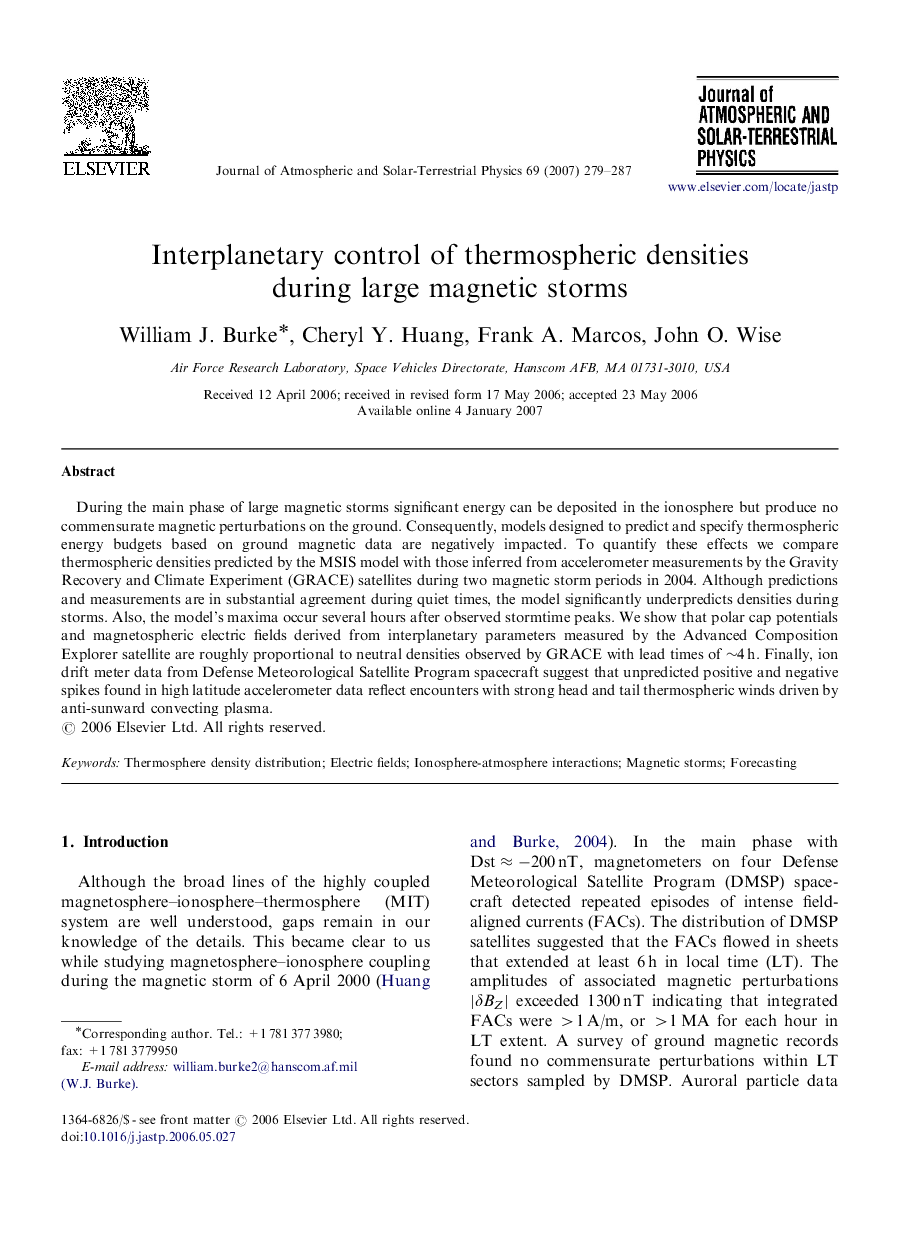| Article ID | Journal | Published Year | Pages | File Type |
|---|---|---|---|---|
| 1778350 | Journal of Atmospheric and Solar-Terrestrial Physics | 2007 | 9 Pages |
During the main phase of large magnetic storms significant energy can be deposited in the ionosphere but produce no commensurate magnetic perturbations on the ground. Consequently, models designed to predict and specify thermospheric energy budgets based on ground magnetic data are negatively impacted. To quantify these effects we compare thermospheric densities predicted by the MSIS model with those inferred from accelerometer measurements by the Gravity Recovery and Climate Experiment (GRACE) satellites during two magnetic storm periods in 2004. Although predictions and measurements are in substantial agreement during quiet times, the model significantly underpredicts densities during storms. Also, the model's maxima occur several hours after observed stormtime peaks. We show that polar cap potentials and magnetospheric electric fields derived from interplanetary parameters measured by the Advanced Composition Explorer satellite are roughly proportional to neutral densities observed by GRACE with lead times of ∼4 h. Finally, ion drift meter data from Defense Meteorological Satellite Program spacecraft suggest that unpredicted positive and negative spikes found in high latitude accelerometer data reflect encounters with strong head and tail thermospheric winds driven by anti-sunward convecting plasma.
